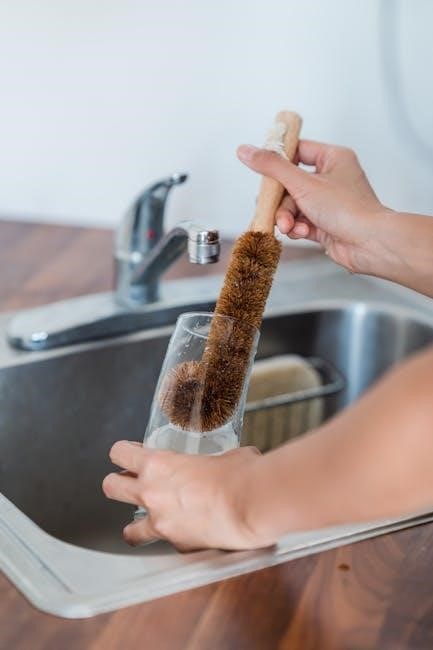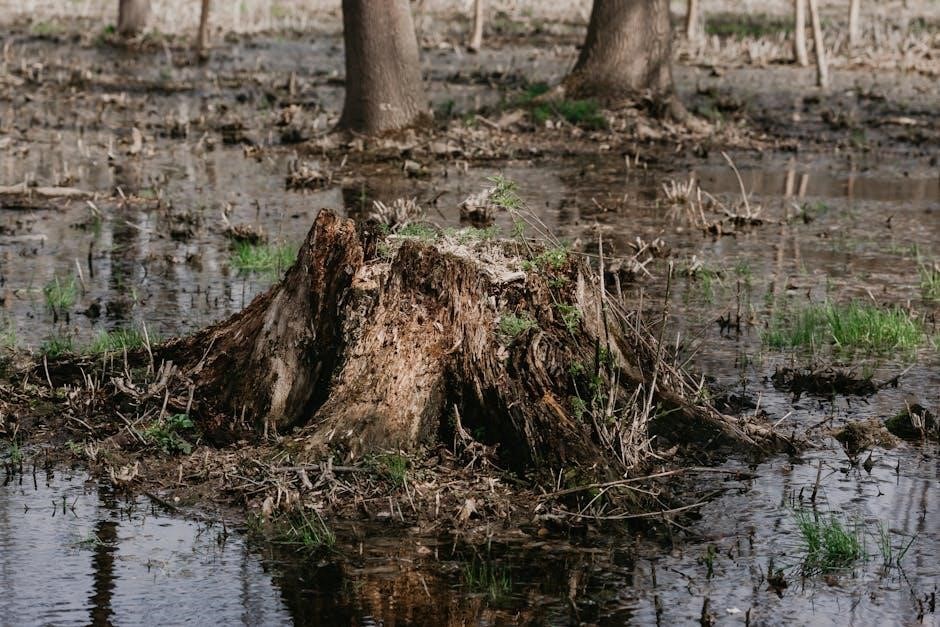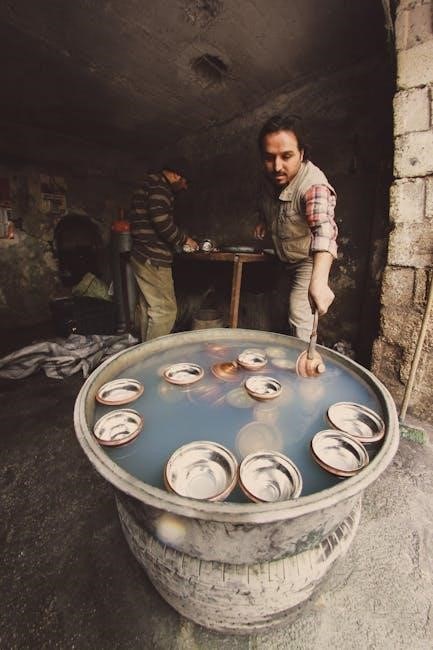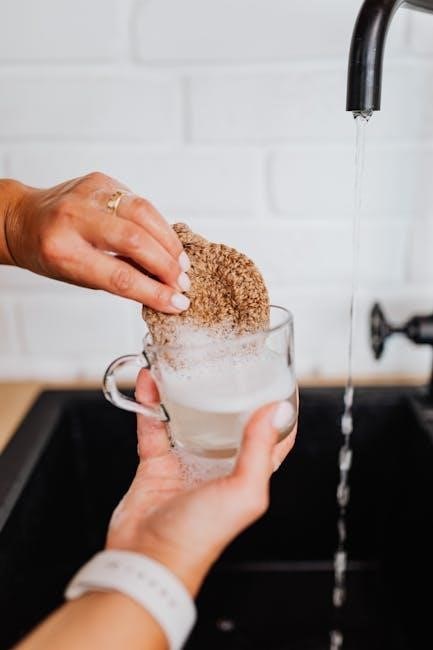manual regeneration water softener
Manual regeneration water softener is a process to remove hardness from water using sodium ions and resin, with systems having buttons to start manual regeneration, utilizing countercurrent regeneration techniques effectively always.
Overview of the Regeneration Cycle
The regeneration cycle is a crucial process in manual regeneration water softener systems, where the water softener cleans hard water and the resin bed gets saturated.
The water softener switches frequencies and needs to be regenerated, at which point it opens the brine tank and uses a salt block to prepare a brine solution.
This process is essential to remove hardness from water, and it involves the exchange of ions between the water and the resin.
The regeneration cycle typically occurs after a certain period of time or when the water softener detects a certain level of water usage.
The cycle involves several steps, including backwashing, brine injection, and rinsing, which work together to restore the resin’s ability to remove hardness from the water.
The regeneration cycle is a critical component of manual regeneration water softener systems, and it plays a key role in maintaining the system’s effectiveness and efficiency.
The cycle’s duration and frequency may vary depending on the system and usage patterns, but its importance remains constant.
Importance of Sodium Ions in Regeneration
Sodium ions play a vital role in the regeneration process of manual regeneration water softener systems.
The presence of sodium ions is essential for the ion exchange process, which allows the resin to remove hardness from the water.
Without sodium ions, the resin would not be able to function properly, and the water softener would not be able to remove hardness from the water.
Sodium ions are used to regenerate the resin, restoring its ability to remove hardness from the water.
The sodium ions are typically provided by a salt block or brine solution, which is used to prepare the brine solution during the regeneration cycle.
The importance of sodium ions in regeneration cannot be overstated, as they are the key to maintaining the effectiveness of the water softener system.
The use of sodium ions in regeneration is a critical component of manual regeneration water softener systems, and it is essential for removing hardness from water.
The sodium ions work to restore the resin’s capacity to remove hardness, ensuring the water softener system functions properly.

Manual Regeneration Process
Manual regeneration process involves steps to restore water softener’s functionality, using sodium ions and resin to remove water hardness, with specific procedures always.
Starting a Manual Regeneration
Starting a manual regeneration of a water softener is a relatively simple process that can be initiated by pressing a button on some systems. The button is usually located on the control panel of the water softener and is labeled as “regenerate” or “recharge”. When this button is pressed, the water softener will begin the regeneration cycle, which involves flushing out the old resin and replacing it with new sodium ions. This process is essential to restore the water softener’s functionality and remove water hardness. The regeneration cycle typically takes around 19 to 30 minutes to complete, depending on the system and water usage. It is recommended to consult the user manual or contact a local water testing service to determine the best time to start a manual regeneration. Regular manual regeneration can help maintain the water softener’s efficiency and effectiveness.
Turning off the Water and Power Supply

To initiate a manual regeneration, it is crucial to turn off the water and power supply to the water softener. This step is essential to prevent any damage to the system or injury to the person performing the regeneration. The water supply should be turned off at the main valve to prevent any water from flowing into the system. Additionally, the power supply should be switched off at the circuit breaker or fuse box to prevent any electrical shock. Once the water and power supply are turned off, the system is ready for manual regeneration. It is recommended to follow the manufacturer’s instructions for turning off the water and power supply, as different systems may have varying requirements. By turning off the water and power supply, you can ensure a safe and successful manual regeneration of your water softener. This step is a critical part of the process.

Types of Regeneration Systems
Regeneration systems include countercurrent and metered types, utilizing sensors and resin to effectively remove water hardness always with different techniques and methods available for various systems and applications.
Countercurrent Regeneration
Countercurrent regeneration is a type of regeneration process used in water softeners, where the flow of water is reversed during the regeneration cycle. This process is considered more efficient than traditional regeneration methods, as it allows for a more thorough cleaning of the resin bed. The countercurrent regeneration process involves the use of a brine solution to remove hardness ions from the resin, and then rinsing the resin with fresh water to remove any remaining brine. This process is typically used in signature water softeners, which are designed to provide a more efficient and effective way of removing hardness from water. The countercurrent regeneration process is also considered to be more gentle on the resin, which can help to extend its lifespan. Overall, countercurrent regeneration is an important part of the water softening process, and is used in many modern water softening systems to provide clean and softened water.
Metered Regeneration
Metered regeneration systems are a type of water softening system that uses sensors to monitor water usage and trigger regeneration only when necessary. This approach is more efficient than traditional timer-based systems, as it only regenerates the resin when it is needed. The metered regeneration system uses a meter to measure the amount of water that has been used, and then triggers the regeneration cycle when a certain amount of water has been used. This helps to conserve salt and water, and also reduces the wear and tear on the system. The metered regeneration system is also more flexible, as it can be programmed to regenerate at specific times of the day or night. Overall, metered regeneration systems are a popular choice for water softening, as they provide a efficient and effective way of removing hardness from water. They are also relatively low maintenance and can be easily installed.
Manual regeneration water softener is essential for maintaining water quality, using sodium ions to remove hardness, ensuring effective always with proper techniques and systems in place every time.

Necessity of Manual Regeneration
Manual regeneration is a crucial process for water softeners, as it ensures the system continues to remove hardness from the water effectively. The necessity of manual regeneration arises when the water softener’s resin bed becomes saturated with minerals, reducing its ability to soften water. By performing manual regeneration, the resin bed is recharged, and the system is restored to its optimal functioning state. This process is essential for maintaining the quality of the water and preventing damage to the system. Regular manual regeneration also helps to prevent the buildup of scale and mineral deposits in the system, which can lead to reduced efficiency and increased maintenance costs. Furthermore, manual regeneration allows for the removal of accumulated impurities and contaminants, ensuring the water softener continues to produce high-quality water. Overall, manual regeneration is a vital component of water softener maintenance.
